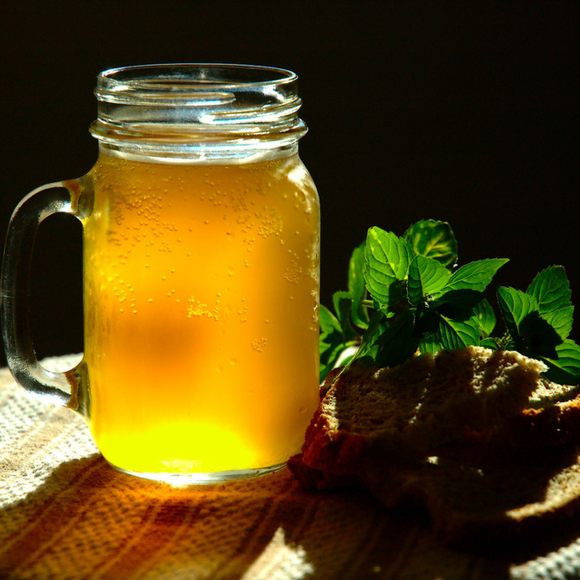Drinks
Kvass
You can find authentic versions of this sour Slavic brew at street stalls and monasteries.
Records of kvass date back as early as the 10th century. Thanks to its simple recipe and some help from Russian soldiers who brought it wherever they were stationed, this ever-so-slightly alcoholic, tangy beverage has become a staple throughout the Slavic nations.
To prepare kvass, brewers soak Russian brown bread or flour in water. They add yeast and optional flavoring, such as mint, honey, or berries, then ferment the mixture for a few days. The result is sour, fizzy, and contains about two percent alcohol by volume. Vendors sell their brew from a tap or in plastic bottles on the street, as well as in local shops.
But this summertime favorite is more than mere refreshment. It was an important part of survival in the Soviet Union. With limited access to clean water, locals relied on communal mugs of kvass served from barrels on the street. Fermenting lowers the liquid’s pH enough to create an acidic environment that kills harmful bacteria, making kvass a safer option than most beverages in times of scarcity.
Today, store-bought kvass is a far cry from its ancestral iteration. While the original batches were filled with living, “good” bacteria, modern commercial offerings are not. Plus, they’re often laden with sugar that disguises the remaining natural flavors. However, small-scale producers have revived authentic kvass, and some places never stopped making it. Monks at the Savvino-Storozhevsky Monastery, for instance, have brewed kvass for more 600 years. In the last decade, they began selling it to the public. Unlike commoditized kvass, the preservative-free stuff goes bad after five days.
Where to Try It
-
Savvino-Storozhevsky Monastery
Ратехинское шоссе, 8, Zvenigorod, 143180, RussiaThe monks at this stunning religious and cultural center have made kvass for more than 600 years.
-
The Royal Eagle Fine Dining
18725 Old Homestead Dr, Harper Woods, Michigan, 48225, United StatesThis traditional restaurant (located in St. Sabbas Orthodox Monastery) offers Russian kvass and Eastern European specialties.
Written By
 rachelrummel
rachelrummel
Sources
- www.npr.org/sections/thesalt/2013/08/14/204859046/america-are-you-tough-enough-to-drink-real-russian-kvas
- draftmag.com/what-is-kvass/
- newsok.com/article/3268210/russians-say-no-to-cola-nization
- books.google.com/books?id=Ga4MYyZq-RMC&printsec=frontcover&dq=oxford+companion+to+beer&hl=en&sa=X&ved=0ahUKEwiJtqPPo6LdAhUOd98KHdolAy0Q6AEIJzAA#v=onepage&q=kvass&f=false













